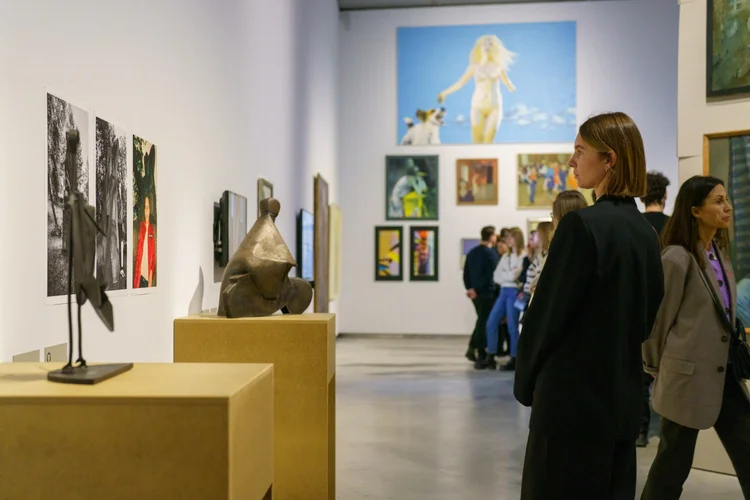Vilnius’ MO Museum presents an exhibition focused on sexuality
The MO Museum has opened a new major exhibition entitled, “We Don’t Do This. Intimacy, Norms and Fantasies in Baltic Art.” Curated by Inga Lāce, Adomas Narkevičius and Rebeka Põldsam, the exhibition focuses on sexuality, gender representations and relations in the visual art of the Baltic region from the 1960s to the present.
The name, “We Don’t Do This” is a play on Lithuanian artist Česlovas Lukenskas’ eponymously titled drawing from 1984 and the famous catchphrase that there was no sex in the Soviet Union. Lukenskas’ statement anticipated the famous 1986 tele-bridge between the USSR and the United States, where a woman on the Soviet side remarked that there was no sex in Soviet TV commercials.
Under Stalin, the USSR became famously anti-sexual; content and discussions related to sexuality were widely censored from the public for many decades. The exhibition asks why sex was so suppressed and what kind of love was allowed.
Through new research in Baltic art collections, re-interpretations of historical art narratives and by following recent academic writing on sexual culture in the Baltics, this exhibition explores how different the region’s public notions of intimacy, gender, love and sexuality are today. How much are they still under the spell of the Soviet era and how have national aims changed over time?
“We Don’t Do This” presents nearly 300 works of art by 130 artists. Arranging pieces in thematic clusters, the exhibition features an array of intimate contemplations on and fantasies of gender, family and sexuality, marked by the ever-changing social norms throughout the Soviet era and beyond.
According to MO Museum Director Milda Ivanauskienė, the idea of exploring art through the prism of physicality, gender and sexuality has been a long time coming due to the taboo nature of these topics in our society.
“This exhibition displays works from different periods, countries and disciplines, speaking to how reality was meant to appear and what was hidden behind declarative façades, and that alternative ideas, communities, lifestyles and ways of expression always exist,” says Milda Ivanauskienė. “We hope this exhibition creates a safer space to explore this subject openly and without denial, reconsider it and enable constructive discussions.”
“The central focus of this show is on the gender stereotypes and norms of the present day. Instead of looking chronologically, we view the artwork through themes, such as the performing of and parodying masculinity and femininity, intimate and romantic interactions and domestic life, public life, work life and leisure, among others,” curator Rebeka Põldsam explains.
The exhibition is also one of the first in the region to focus on the depictions of the LGBTQ+ community dating to the 1970s. “The same-sex partnership law was finally approved last November in Latvia; in the meantime, Estonia already announced full marriage equality; while Lithuania has yet to even establish a partnership law. It is very important to bring contemporary artists into this conversation, especially as younger generations are able to address things that were previously silenced,” says Inga Lāce.
More information about the exhibition: https://mo.lt/en/ivykiai/we-dont-do-this/




